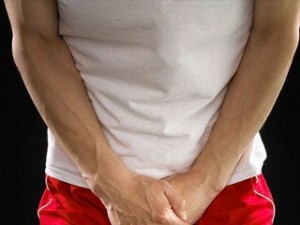A testicular lump or swelling refers to an enlarged testicle or an abnormal growth on a person’s testicle. Testicular lump or swelling is often caused by testicular torsion, orchitis, testicular injury or testicular cancer. Causes of swelling around or next to the testicle may indicate a hydrocele, epididymitis, an inguinal hernia or a varicocele.
A person with a testicular lump or swelling may also have scrotal swelling, testicular pain, testicular tenderness, testicular swelling, a mass in the scrotum or swollen glands in the groin.
Treatment for testicular lump swelling may depend on the cause and severity. General treatment involves rest, cold or warm compresses, scrotal support, non-steroidal anti-inflammatory medication for pain, antibiotics and surgery.
Disclaimer: this post on testicular swelling and its signs, symptoms, causes and treatment is for learning purposes only. To learn more about recognizing and managing impact injuries and wounds sign up for first aid and CPR courses with St Mark James.
Causes
Causes of testicular swelling may include:
- Epididymitis
- Epididymal cysts
- Hydrocele
- Orchitis
- Spermatocele
- Testicular cancer
- Testicular injury
- Testicular torsion
- Varicocele
Signs and symptoms
Signs and symptoms of testicular lump or injury include:
- Testicular pain
- Testicular swelling
- Scrotal swelling
- Swollen glands in the groin
- Testicular tenderness
Treatment
Treatment for testicular lump or swelling may depend on the cause and severity. General treatment involves rest, cold or warm compresses, scrotal support, nonsteroidal anti-inflammatory medication for pain, antibiotics and surgery.
Treatment options for testicular lump or swelling may include the following:
- Scrotal support to minimize movement of the scrotum by keeping the scrotum elevated
- Warm compresses to the affected region
- Elevation of the legs to encourage blood flow
- Non-steroidal anti-inflammatory medication such as ibuprofen, naproxen and ketoprufen to control pain and swelling
- Narcotic pain medication for moderate to severe pain – for short-term use only
- Antibiotic for bacterial infection
- Surgery
Home-Care treatment
Home-care treatment for testicular lump or swelling may include;
- Apply warm compresses to the skin for 20-30 minutes, about 4 times a day, avoid warm compresses if there is an injury
- Use scrotal support to elevate the scrotum and minimize movement in case of a swollen testicle
- Take non-steroidal anti-inflammatory medication for pain. Avoid giving aspirin to children and teenagers under 18 years of age
- Take acetaminophen for pain
- Take medication as directed by your health care provider and avoid skipping doses to maintain the effectiveness of the prescribed medication
- Perform a testicular self-examination every month to check for any changes
When to seek medical attention
See your doctor if any of the following problems occur along with testicular lump or swelling;
- Testicular pain
- Hematuria or blood in the urine – blood clots in the urine or red/pink urine
- Difficulty urinating – decreased urination, increased urinary frequency or inability to urinate
- Pain during urination
- Inguinal lymphadenopathy – swollen gland sin the groin
- Fever of over 101 degrees F or 38.c3 C
- Worsening testicular swelling
- Worsening testicular tenderness
- Worsening groin swelling
- Worsening swelling and redness of the scrotum
- Persistent lump n the testicle – lasts for more than 1 week
Learn More
Learn more about minor and major emergencies by enrolling in first aid and CPR courses (register here) through St Mark James.
Related Article You May Also Like
Related Video
http://www.youtube.com/watch?v=-XAQ6IguyB8

